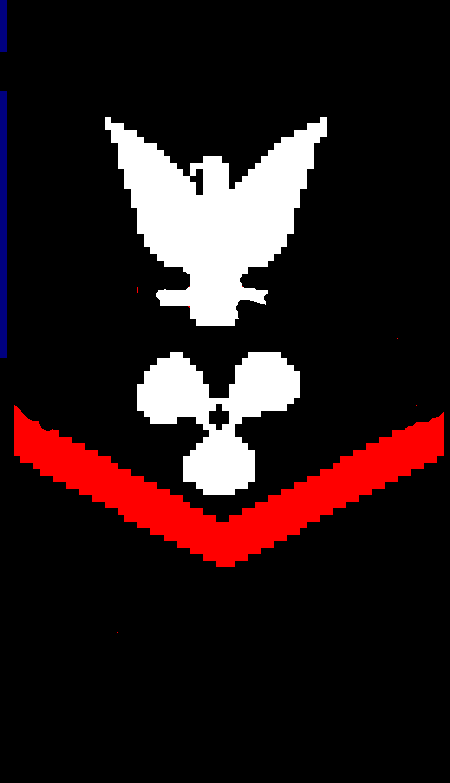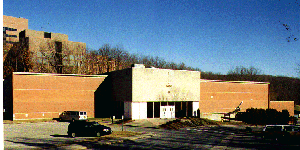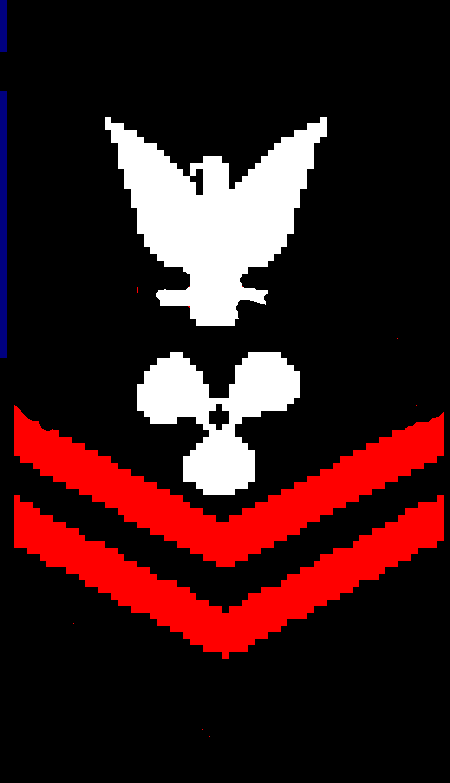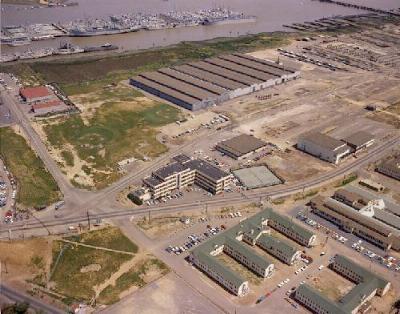 |
|
|
 |
|
|
| Located on the Submarine Base at New London, Connecticut. I attended from April 9 to September 21, 1962. I was a Machinist's Mate Third Class assigned to the Augmented Section (we were called "Augie Doggies") of Class 62-2, the last class to go through at the Sub Base. The school was then moved to Bainbridge, Maryland and later to Orlando, Florida (now in Charleston, South Carolina). The Augmented Section was taught at the college level and the essential difference from the basic nuclear power course was a greater emphasis on mathematics, enabling a student to develop the other academic subjects on a more rigorous basis. The course covered algebra, calculus (the instructor wrote on the blackboard with his right hand and immediately erase with his left hand), physics, chemistry, heat transfer and fluid flow theory, reactor principles, metallurgy, reactor plant technology, radiological controls, and specialized instruction in my rating. My section started out with 20 men and ended with 12 (I squeaked by in the 12th spot). |
 |
| Cromwell Hall (affectionately known as "Cromwell On The- Thames") where Nuclear Power School was conducted. Note: There were windows in this building when I was here and that building up on the hill was not there. |
 |
 |
|
|
| Located at Windsor Locks, Connecticut in the midst
of some shade-grown tobacco fields. I was there from October 8, 1962
to August 22, 1963. I reported aboard as a Machinist's Mate Third
Class and was advanced to Machinist's Mate Second Class in November 1962.
The plant was the prototype reactor for the USS Tullibee (SSN-597) and
was designated SIC. Except for its size, and the fact that it had
turbo-electric drive, the system layout was similar to the S5W reactor
plants being used in most nuclear-powered submarines at the time.
This was very beneficial to the graduates for their future qualification
when they got assigned to their first nuclear-powered submarine.
The first three months was all in the classroom. During this time
we were taught the theory of the systems installed in the SIC plant.
After that we were assigned to a shift for in-hull, hands-on training to
learn to actually operate the plant itself. Upon completion of this
six month period, I was assigned the Navy Enlisted Classification (NEC)
of 3355 (the classification for a nuclear-trained, submarine Machinist's
Mate) and started drawing Proficiency Pay (or "Pro-pay") of $75 per month
(later increased to $150). Our training to this point was supposedly
equivalent to a $20,000 (at that time) college education (shoved up our
you know-wheres a nickel at a time).
My class standing (13 out of 77) and my rating as a Machinist's Mate then enabled me to be assigned to the 9-week Engineering Laboratory Technician (ELT) training course. This course was conducted at the site and was taught by civilian Health Physicists. We learned how to perform water chemistry analyses of the reactor's primary coolant and the "boiler water" in the Steam Generators. We also learned radiological control procedures. I graduated (1 out of 12) on July 23, 1963 and was assigned the ELT NEC of 3356. |
 |
| Taken in my apartment in Springfield MA, circa Feb 1963 |
|
|
 |
 |
|
Photo courtesy of Dan Martini |
Forty years later. Photo courtesy of Bud Turner; ex-MT2(SS); USS Stonewall Jackson (SSBN-634) Gold Crew (Plank Owner). |
 |
| Aerial view of Nuke School, Mare Island. Photo was taken in May 1965. School is the cream-colored building. Up the road to the right is the EM Club and across the street from the school are the barracks. Photo courtesy of National Archives, San Bruno, CA, where Bud Turner found it while doing research on Mare Island FBM boats. |
 |
|
|
| The only prototypes left in operation for training
are the ones at Ballston
Spa (at one time called West Milton) NY and two ex-Fleet Ballistic
Missile submarines (called "Moored Training Ships" or "MTSs") that are
moored at the Naval Weapons Station (where the Nuclear Power School is
also located) near Goosecreek SC, which is just north of Charleston SC.
On 10 June 1985, it was decided that the United States would dismantle a ballistic missile submarine to remain within the SALT II ceiling on MIRVed missiles. USS Sam Rayburn (SSBN-635) was selected to fulfill this requirement and was deactivated on 16 September 1985, with missile tubes filled with concrete and tube hatches removed. She subsequently underwent availabilities at Charleston Naval Shipyard for missile dismantlement and refueling/conversion to a Moored Training Ship (MTS) to train personnel in the Nuclear Power Program. The MTS Project had been approved in February of 1984 without the selection of a particular hull. RAYBURN was available for this project thus preventing total scrapping. The dismantlement and conversion required removal of the majority of the missile compartment, ripout and modification of the operations compartment to hold office and training space, installation of a second diesel generator and special mooring arrangements including a mechanism to absorb power generated by the main propulsion shaft. The first training class reported on 10 July 1989 and official decommissioning of the ship took place shortly thereafter on 28 August 1989. |
|
|
|
|
|
|
|
|
|
|
|
|
|
|